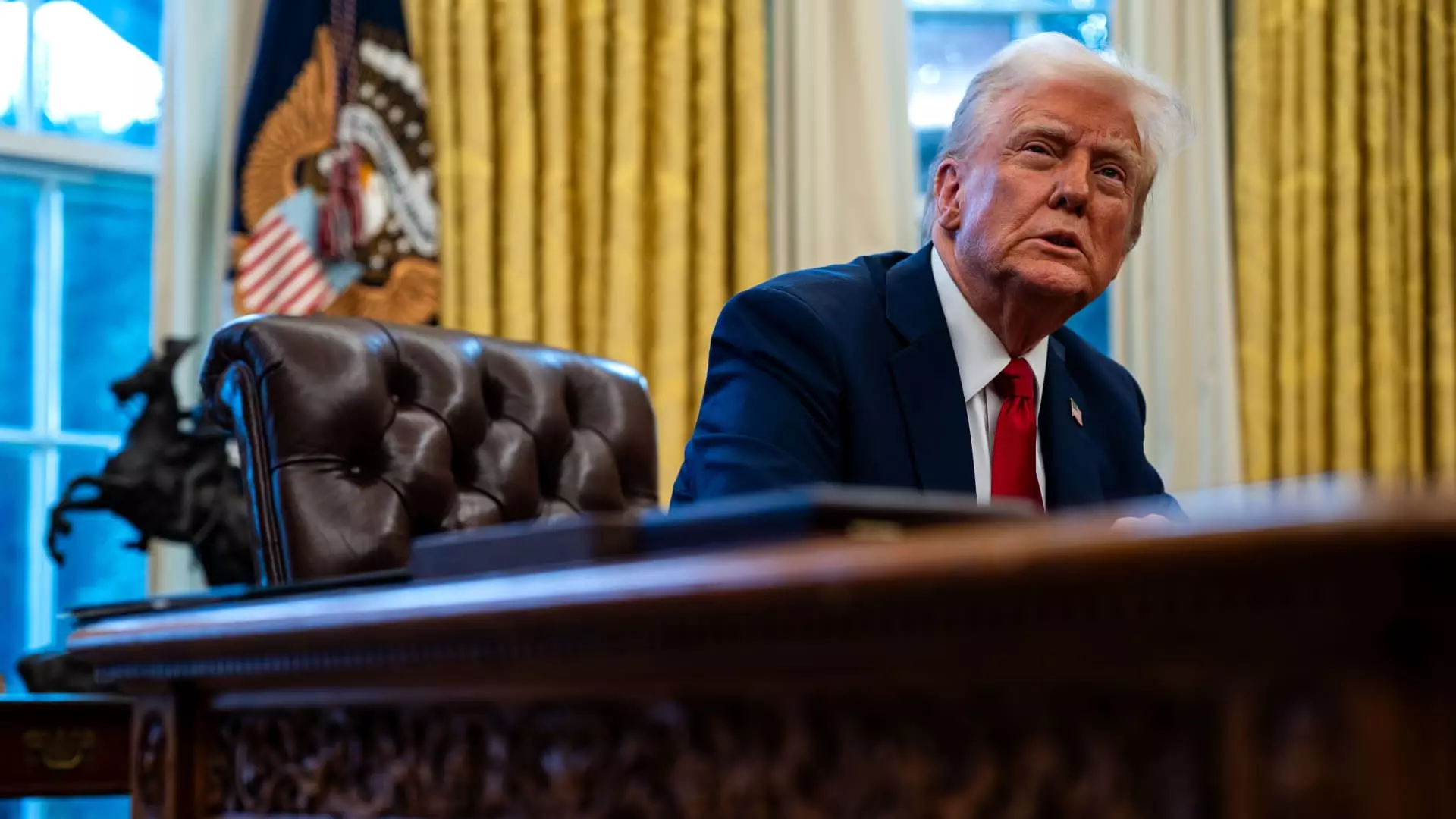In a significant move that has raised eyebrows among economists and political analysts alike, former President Donald Trump has officially confirmed the implementation of a 25% tariff on imports from Mexico and Canada, set to take effect on February 1. This announcement follows a series of threats and speculations that have dominated headlines in recent weeks, marking another chapter in the ongoing saga of U.S. trade relations within North America. The implications of this policy extend beyond immediate economic effects, stirring concerns about retaliatory measures from both Mexico and Canada, and provoking discussions on the larger ramifications for the regional economy.
While the blanket 25% tariff will cover a wide array of goods, Trump has highlighted that the decision regarding oil imports is still under review. Speaking candidly with reporters, he emphasized the importance of “proper pricing” from both nations as a key factor in determining whether oil imports would also be subjected to tariffs. This uncertainty presents a unique angle to the dialogue surrounding the tariffs—beyond simply trade and economics, it introduces a layer of conditionality based on perceived fairness in pricing. As the global oil market fluctuates, with Brent crude trading at approximately $76.92 per barrel, the stakes are high for bilateral relations that hinge on pricing negotiations and supply chain dynamics.
Trump provided a mix of political and economic justifications for this drastic measure. In his statements, he cited a surge in immigration, the influx of illicit drugs such as fentanyl, and the financial deficits the U.S. faces with Canada and Mexico as crucial reasons for enacting these tariffs. It is essential to appreciate the underlying socio-economic factors Trump is highlighting; however, his rhetoric has drawn criticism for oversimplifying complex issues. By framing the tariff as a solution to multifaceted problems, he risks alienating important trade partners and sparking a potential trade war that may ultimately hurt American consumers—an ironic consequence for a policy allegedly designed to protect them.
Responses from Canadian and Mexican officials suggest that an interconnected and reciprocal approach to trade is likely. Canadian Trade Minister Mary Ng has indicated that “everything is on the table” concerning potential retaliatory measures, including export taxes on energy products. Similarly, Mexico’s President Claudia Sheinbaum highlighted that any U.S. tariffs would lead to corresponding actions from her administration, implicitly warning of price increases that could ultimately burden American consumers. Such threatened retaliation could catalyze a cycle of escalating tariffs that would lead to increased costs for everyday goods on both sides of the border.
Market reactions to Trump’s tariff news have involved shifts in currency valuations as both the Mexican peso and the Canadian dollar notably rose against the U.S. dollar. This gain, albeit a recovery from overnight losses, suggests investors may perceive these announced tariffs as a temporary disruption rather than a long-term financial threat. Nevertheless, policymakers like those at the Bank of Canada have voiced concerns about the potential for persistent inflation stemming from U.S. protectionist measures, painting a more complicated picture of the economic landscape.
As the February implementation date approaches, the ramifications of Trump’s tariff policy are becoming clearer. The disparities between theoretical economic benefits and potential drawbacks highlight the intricacies inherent in international trade. While the tariffs may initially seem like a tool for promoting domestic interests, the probability of retaliatory measures coupled with rising consumer prices makes the long-term viability of such policies questionable. Ultimately, how Canada and Mexico respond, and how the broader economic landscape reacts, will shape the future of North American trade relations for years to come.

